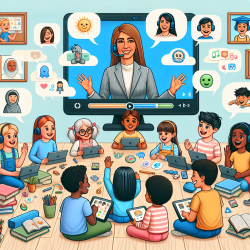Recent research published in the journal Sensors titled "Understanding Emotions in Children with Developmental Disabilities during Robot Therapy Using EDA" provides compelling evidence on the efficacy of using robot-assisted therapy to enhance emotional understanding in children with developmental disabilities. This study utilized Electrodermal Activity (EDA) to measure and analyze emotional responses, presenting a novel approach to improving therapeutic outcomes.
For practitioners working with children with developmental disabilities, integrating findings from this research can be highly beneficial. Here are some actionable insights and recommendations based on the study:
- Utilize Robots for Emotional Expression Training: The study highlights the effectiveness of robots like NAO in helping children recognize and express emotions. Implementing similar robotic tools in therapy sessions can make emotional expression exercises more engaging and effective.
- Incorporate EDA Measurements: EDA provides a quantitative measure of emotional arousal, offering real-time feedback that can be invaluable in tailoring therapy sessions. Equip your practice with EDA measurement tools to monitor and adjust interventions based on physiological data.
- Personalize Therapy Based on Emotional Data: The study found variability in emotional responses among children. Use EDA data to personalize therapy, addressing each child's unique emotional profile and improving the specificity of interventions.
- Continuous Monitoring and Feedback: Robots can provide continuous feedback to both the therapist and the child. This real-time interaction helps in reinforcing correct emotional responses and adjusting techniques promptly.
Encouraging further research in this domain is crucial. The integration of advanced technologies like EDA and robotics in therapy opens new avenues for enhancing the effectiveness of interventions for children with developmental disabilities. Practitioners are urged to stay updated with the latest research and consider collaborative studies to further validate and refine these innovative approaches.
To read the original research paper, please follow this link: Understanding Emotions in Children with Developmental Disabilities during Robot Therapy Using EDA.










